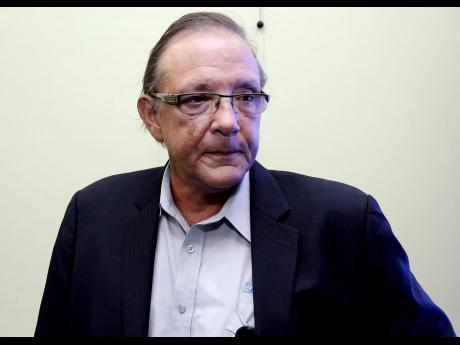For the financial year ending December 2018, IronRock Insurance – the newest entrant in a market of nine operating companies – generated a profit of $811,000.
By itself that number would be unimpressive. But within its proper context – it marks a turnaround of a large loss of nearly $48 million the year before – it’s a good outcome for the company that launched as a start-up just over three years ago.
And it’s fuelling optimism among the directors, who expect to continue making gains, even if slower and lower than first projected.
The company founded by insurance experts Evan Thwaites and Wayne Hardie, and the late William McConnell started writing business at the start of 2016.
Last year, IronRock’s gross premiums surpassed the half-billion dollar mark to hit $572 million, up from $424 million the year before; its assets grew moderately to $1.02 billion; but its capital base stayed flat at $513 million.
These numbers are preliminary and subject to reverification by the company’s auditors.
Still, the financial achievements fall somewhat short of projections outlined in IronRock’s prospectus for its initial public offering of shares and subsequent listing on the junior market of the Jamaica Stock Exchange in mid-March 2016.
But on the key metric that is used to diagnose the health of insurance businesses – the Minimum Capital Test, or MCT – IronRock’s preliminary estimate for 2018 was 515.27 per cent, which is more than twice the 250 per cent benchmark set by regulators and 200 percentage points more than the general insurer expected its performance to deliver at that point in time.
Managing Director Evan Thwaites cautions, however, that the figure is still subject to both audit and actuarial review, and could change.
Industry data from the Financial Services Commission (FSC) valued net premiums earned by general insurers at $18 billion in 2017. IronRock, with $128.4 million in net premium for that period, had 0.7 per cent of the market.
But its share rises to a ‘healthier’ one per cent, says Thwaites, when gross premium income is used as the marker.
“IronRock launched with very ambitious targets, and as a team we have all worked tirelessly to meet them. We are pleased with our performance in the first two years of operation…,” he said in an interview with the Financial Gleaner.
IronRock expected to make a loss on its first year of operation, but it also forecast that it would have been in the black the following year and make $60 million of profit in 2018, which would have wiped out its accumulated deficits.
It fell short of those goals, and even while last year closed with a small profit, the company was still in the red on its core insurance activities. However, its underwriting losses, at $44 million, were cut by more than a half relative to the previous year’s out-turn at $101 million.
IronRock wants to capture at least 3.5 per cent of the local market by its fifth year of operation in 2020. By then, it also projected it would have accumulated about $400 million of profit.
Last year, however, the company was knocked off its targets by external events that ended up influencing local insurance behaviour, as Thwaites described it.
“IronRock’s revenue growth tracked very closely with our IPO projections. However, after the region experienced a catastrophic hurricane season in 2017, rates in the Jamaican property market began to harden, and during this period IronRock refrained from employing competitive strategies that could have undermined the market correction,” he said.
http://jamaica-gleaner.com/article/business/20190215/ironrock-misses-targets-optimistic-after-turnaround-2018#.XGq-9T2vv5Q.email




Leave A Comment